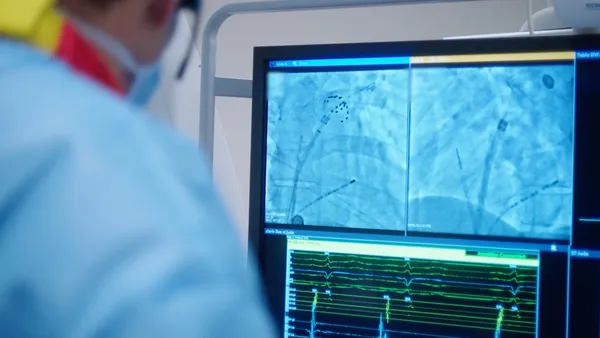Dive Brief:
- FDA released its vision for its Breakthrough Devices Program Tuesday, outlining its plans to speed new devices that diagnose or treat life-threatening or irreversibly debilitating diseases through development and review. The agency also announced plans for establishment of a new "Safer Technologies Program" (STeP), which aims to create a similar pathway for devices aimed at treating non-life-threatening diseases.
- The Breakthrough Devices Program contains elements of the former Expedited Access Pathway, Innovation Pathway and Priority Review Program. Devices that received a designation under the Expedited Access Pathway will now be considered part of the Breakthrough Devices Program, according to the agency.
- The pathway, created by the 21st Century Cures Act, has been floated by industry and the government as a potential trigger for speeding Medicare coverage of devices as they gain marketing authorization from FDA. Since the Breakthrough Devices Program was established in 2016, 110 devices have been granted a breakthrough designation and eight have received marketing authorization, according to FDA.
Dive Insight:
The idea for a new accelerated device pathway for non-life-threatening diseases was first introduced in FDA's April Medical Device Safety Action Plan.
The goal of the Breakthrough Devices Program is to create "a more agile process for developers of breakthrough devices to obtain feedback from the FDA on their innovations," FDA Commissioner Scott Gottlieb and device center chief Jeff Shuren said in a statement. More information on STeP will be disseminated in the coming months, they added.
"We envision that STeP would be available for devices that do not otherwise meet the criteria to be considered a breakthrough device in our current program, but through innovative designs, have the potential to be significantly safer than currently available alternative treatments or diagnostics," Gottlieb and Shuren said.
In its final guidance, FDA appears to have passed over one suggestion by AdvaMed raised in its comments on the draft guidance last December. The device trade lobby had asked FDA to expand breakthrough designations to biologics license applications if appropriate.
Under the program, FDA now says that it "intends to provide interactive and timely communication" with manufacturers during development and review for:
- Q-Submissions.
- Investigational Device Exemptions.
- 510(k)s.
- De Novo requests.
- Premarket approvals.
- Certain PMA supplements.
- Device-led combination products.
Specifically, FDA reviewers will discuss feasibility of response timelines, use "track changes" for documents being revised interactively and create summary tables to track discussions. Extra staff will also be designated to respond to questions from institutional review committees regarding investigational use of breakthrough devices.
Another industry-friendly action FDA will take is the disclosure of advisory committee discussion topics to device makers at least five business days ahead of the meeting. In addition, sponsors will also be able to recommend their own external experts.
The Fall Unified Agenda targets March 2019 for the release of a proposed rule that aims to "streamline [Medicare] coverage of breakthrough technologies."











